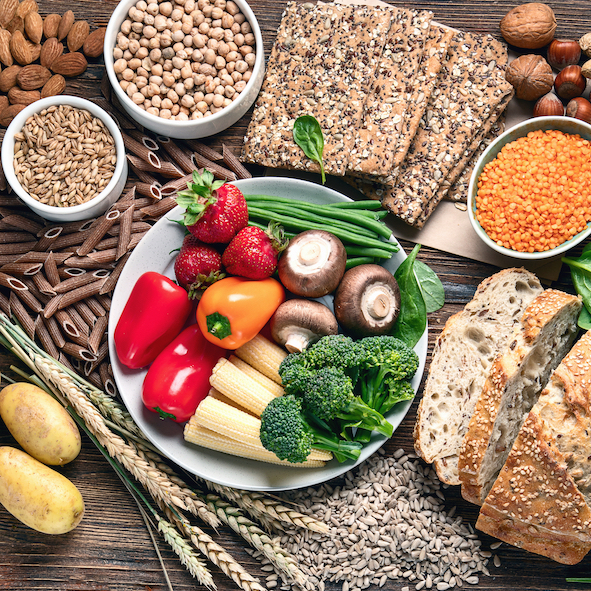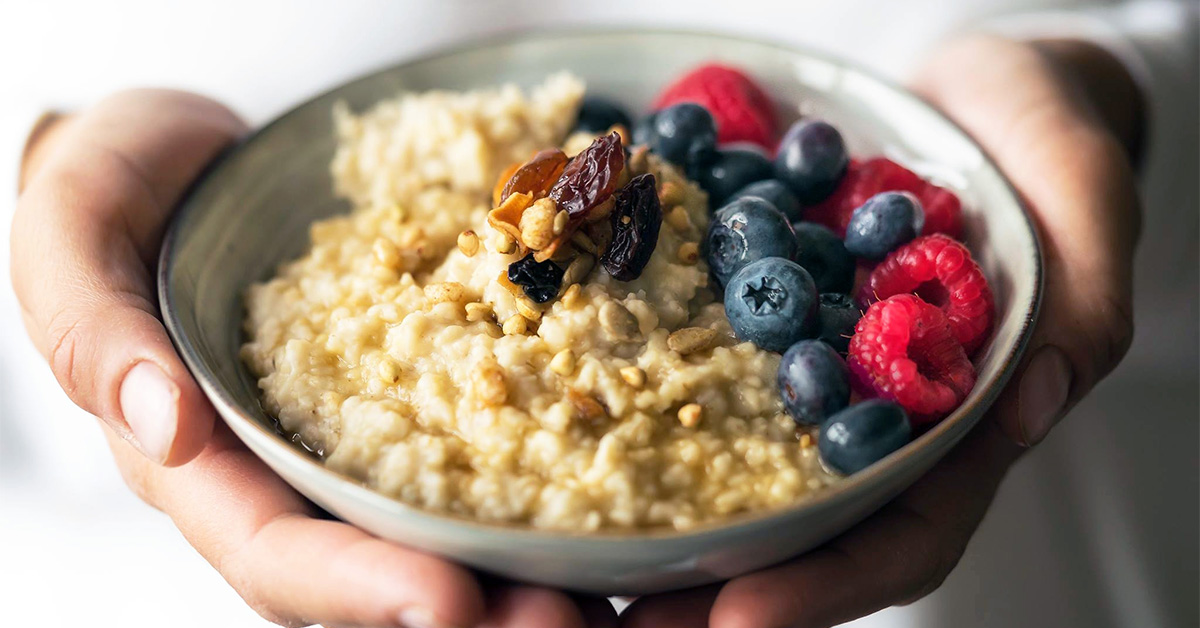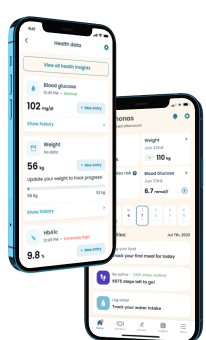Fiber for Diabetics: The Diet Plan That Changes Everything

When it comes to healthy eating, the average person needs nutrients combined from various food categories. Namely, you need to feed your body with meals that pack a good balance of carbohydrates, protein, vitamins, fat, fiber, and minerals. Each of these food categories offers essential nutrients, which you need in varying amounts.
For a person with diabetes, carbohydrates are generally considered a no-no. In fact, most doctors advise people with diabetes to reduce their intake of carbs as excessive consumption is deemed unhealthy for the body.
Carbohydrates are rich sources of sugar and starch, both ranking high on the glycemic index scale. Our system quickly digests them and converts them into blood glucose. This usually translates to increased blood glucose levels in patients with diabetes.
However, you don’t necessarily need to avoid carbohydrates completely. Carbohydrates contain fiber which has been regarded as “the good carb.” According to the American Diabetes Association (ADA), it’s the healthiest form of carbohydrate. The health body asserts that fiber-rich foods will significantly benefit people with diabetes and those at risk of developing the illness.
This exploratory guide enlightens you on how fiber works in battling diabetes and how you can increase your fiber content to just the right amount.
An Overview of What Fiber Is and How It Works
Dietary fiber is a significant promoter of digestive health. A 2018 review of dietary fiber by Marc P. McRae reinforces this valuable plant food nutrient to be incredibly effective in reducing the chances of developing type 2 diabetes.
Fiber acts as nature’s broom for our digestive system. It’s a type of carbohydrate commonly found in plant-based foods.
Naturally, the body is unable to digest this type of carbohydrate. However, it’s known to pass through the digestive tract, taking on waste as it exits the system. Even in its unprocessed state, it constitutes a healthy diet and benefits the body, mainly regulating blood sugar levels.
To get the best from fiber, you should consume 20–30 grams per day. However, only 5% of people in the US get up to this amount per day. The majority only get about 15 g on average per day.
The reason for this somewhat low number isn’t far-fetched — most people don’t just eat enough fruits, whole grains, vegetables, etc. While it’s essential to have a high fiber diet as a person with diabetes, you should ensure you increase your fiber intake gradually to curb side effects like bloating, cramping, and gas.
Categorizing Fiber

Fiber is categorized into two, including:
Soluble Fiber
This type of fiber is characterized by its ability to dissolve in water. It forms a gel-like substance that helps slow down the digestion process when fully dissolved. It’s also quite effective in weight loss and lowering blood glucose levels.
Furthermore, soluble fiber is incredibly effective in lowering cholesterol levels by preventing the digestion of dietary cholesterol. It also boosts colon health by helping the gut bacteria thrive. You stand to derive these benefits and more when you consume foods high in soluble fiber, including black beans, lima beans, apple, artichoke, lentils, etc.
Insoluble Fiber
As the name implies, this type of fiber doesn’t dissolve in water. Instead, it’s left intact during digestion passing through the digestive tract to execute its effects.
Insoluble fiber offers many benefits to the body in this undigested state. For example, it helps prevent constipation by absorbing fluid in the gastrointestinal tract and speeding up waste processing. Examples of foods that contain this form of fiber are almonds, pear, lentils, garbanzo beans, strawberries, walnuts, etc.
Is Fiber Supplement a Thing?
Apart from eating food high in fiber content, you can also get a good dose of fiber from fiber supplements. These supplements are usually available in drug stores or food stores. Suffice to say, they can be a great alternative to plant fibers, especially for people with gastrointestinal issues.
Although fiber supplements function just as well as regular high fiber foods, some have been observed to cause side effects like bloating. Thus, a preference for high fiber foods over fiber supplements is often advised. It’s also vital you consult with your dietician before taking fiber supplements.
How Does Dietary Fiber Benefit Diabetes Patients?

When it comes to chronic illnesses like diabetes, the kind of food a patient consumes warrants special attention. Foods containing high fiber have proven incredibly effective in battling this illness. They provide a wide range of health benefits for people with diabetes and can also help prevent the disease from developing.
One of the significant challenges people with diabetes face is fluctuating blood sugar levels. When blood levels rise too high, it can result in some health complications.
Also, diabetes is known to lead to cardiovascular disease, resulting from high blood cholesterol. Thankfully, a high fiber diet, especially those rich in soluble fiber, helps lower LDL cholesterol, reducing the risk of developing cardiovascular diseases like heart disease.



It does this by preventing the recirculation of bile salts when it binds to them. This way, it forces the body to produce more of these salts using cholesterol from the liver. The resultant effect is a reduction of blood cholesterol.
Obesity is another significant risk factor for diabetes. Luckily, a high fiber diet is filling, helping you manage your appetite. In addition, foods high in fiber content have been observed to take longer to chew, giving your body enough time to figure out if it’s full or not, preventing you from overeating. This helps with weight management and also maintains your blood glucose levels.
Finally, fiber takes care of gut health by keeping your internal plumbing running smoothly. Namely, it functions as a laxative agent, getting rid of unnecessary waste in the digestive tract. Your gut bacteria also benefit from soluble fiber as they get the necessary food they need from its fermentation.
The Right Amount of Fiber for a Person With Diabetes
High-fiber diets are essential for people of all ages. But, more importantly, people living with diabetes are to follow the 2020-2025 Dietary Guidelines for Americans. Eating fiber within this range guarantees you a healthy, fiber-rich diet. However, you must integrate fiber into your diet plan gradually. That’ll help your body adjust to the diet change.
Fast-tracking things or going overboard can lead to uncomfortable digestive symptoms. Notably, you can quickly get bloated or suffer constipation if you don’t pace your fiber intake.
ADA advises taking more water when on a high-fiber diet meal plan. Water aids the smooth movement of food through the body, which is also true for fiber-rich meals. So, drink water and lots of it at that.
Foods That Are High Fiber Sources
Generally, fiber tends to exist in varying quantities in different kinds of food. However, to get the correct amount of fiber for you, it’s good to know those that have it in high amounts. That said, here are some fiber-rich foods that’ll surely be a great addition to your diabetes diet.
Beans
Various types of beans have differing quantities of fiber. Experts advise mixing up these legumes to get the best portion of the fiber. For example, a half-cup serving of black beans has as much as 6 g of fiber, while a similar serving of white beans contains only about 5 grams. Combining them with other food such as salad or soup would make a fiber-rich meal.
Fresh Popcorn
Popcorn is often regarded as one of the healthiest snacks. However, we’re not referring to those enjoyed at the movie theaters, often mixed with salt, butter, and popcorn topping. Rather, we mean a fresh air-popped popcorn source containing 2 grams of fiber.
Enjoying a bowl of popcorn on a regular afternoon is a great way to get more fiber into your system. Worthy of mentioning is that this snack contains no cholesterol or fat; it’s as healthy as it comes.
Peas
Get more soluble fiber with these green veggies. They’re rich in vitamins A, C, and K, offering the perfect replacement for rice.
You get about 3.5 g of fiber from ⅔ cup of canned peas. Apart from getting a good amount of fiber per serving, you also get 3.8 g of protein and just 11 g of carbohydrates. Yellow peas contain more fiber, offering about 9 g per quarter-cup serving.
However, it’d be best if you watch your carbohydrate intake. For example, adding some peas to your salad will increase its fiber content.
Lentils
These legumes are a great source of fiber, with 50% of their carbohydrate makeup being just fiber. Remarkably, a cup of lentils offers as much as 15 g of fiber. More particularly, they’re an excellent source of soluble fiber. Other added benefits include 40 g and 18 g of carbohydrates and protein, respectively, per one-cup serving.
Avocados
Get a good fill of fiber in your next meal by scooping some avocado. These bright green fruits contain both soluble and insoluble fiber as well as healthy fatty acids. Namely, a quarter-cup serving offers at least 2 g of fiber, 3 g of carbohydrate, 5 g of fat, and just 50 calories.
Suffice to say, this fruit contains all the nutrients essential for people with diabetes. Eating this in place of saturated fat is a good recommendation to help lower LDL cholesterol.
Others
The above are just a few examples of fiber-dense foods. It’d help if you looked out for artichokes that contain about 4.8 g of fiber in a half-cup serving. Broccoli is another cruciferous green veggie that offers a decent amount of fiber at 2 g per cup. Berries, pears, oatmeal, wheat bran, shredded wheat, etc., are other excellent sources of fiber.
Having outlined the various types of food that are pretty rich in fiber, the next thing to look at is how to integrate them into your regular diet. The following section outlines the right way to get a diet that’s a lot richer in fiber, especially for a diabetic.
How to Get More Fiber in Your Diet
Figuring out how much fiber is right or the type of food that contains the fiber you need can be quite a hassle. However, knowing how to add more fiber to your regular meal in just the right way would go a long way to improving your overall health.
You can also adopt new diet plans that are exceptionally rich in fiber. It’s advisable to spread your fiber intake across your daily meal plan instead of taking it at once. The following tips can help:
- Go for a fiber-friendly breakfast: A bowl of crunchy nuts and berries should suffice for a healthy, fiber-rich breakfast.
- Do more of whole grains: Brown rice is an excellent source of fiber; take more of it in place of white rice. Also, whole wheat pasta and whole wheat bread are excellent choices to give yourself a fiber boost.
Key Takeaways
Fiber or healthy carb (as it’s commonly referred to) is essential for people with diabetes and those at risk of developing the illness. Of course, you need to inform your dietician or doctor before switching to a fiber-rich diet. These healthcare professionals are in the best position to enlighten you on the right amount of fiber you require and how you can successfully fit them into your diet.
Overall, opt for a fiber-rich whole-grain diet with dried fruits, nuts, and berries. Don’t forget to eat apples at least once per day. You also can’t go wrong with the veggies, broccoli, and other green vegetables that qualify as great fiber sources. While this guide outlines how you can successfully add fiber to your regular meal, you should slowly introduce fiber-filled foods into your diet to preclude certain side effects like bloating and gas.
Another great way to monitor your fiber intake is via digital meal planners, which help manage your meal plan and monitor your blood sugar level. Our Klinio app offers a great resource of foods rich in fiber and suggests just how much you should take daily based on your blood sugar levels. To cap it all, our app users enjoy frequent updates on the most recent approaches to managing diabetes through diet changes and workout sessions.
Take a quiz and get your diabetes-management plan today!









